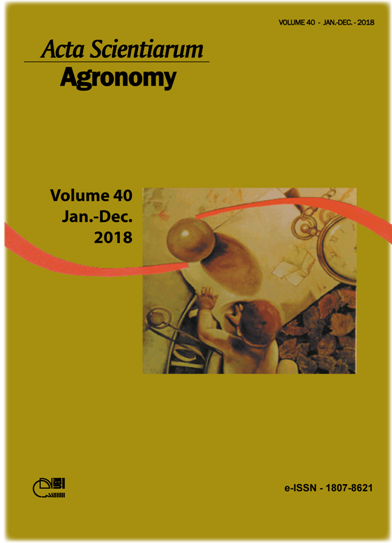<b>Agrosilvopastoral system enhances suppressiveness to soybean damping-off caused by <i>Rhizoctonia solani</i> and alters <i>Fusarium </i>and <i>Trichoderma</i> population density
Resumo
Integrated crop-livestock systems (ICLS) are sustainable options for agricultural diversification, but there have been few studies on the influence of ICLS on soil microorganisms. This work investigated the influence of agropastoral (AP) and agrosilvopastoral (ASP) systems, compared with a non-integrated crop (CO) on the suppression of Rhizoctonia solani and on the density of Fusarium and Trichoderma propagules. In the first assay, soil samples were inoculated with R. solani and evaluated for soybean damping-off. After this, the soil was sterilized and re-inoculated with the pathogen for a new evaluation. Finally, 10% of the soil in the pots were substituted by newly soil samples collected from the same plots in the field to evaluate de suppressiveness transference by soil samples. In the second assay, native Fusarium and Trichoderma propagules were quantified in semi-selective media. Damping-off incidence in ASP was 70% compared to AP and CO. Evaluations with sterilized and transferred soil samples attributed this suppression to biotic factors. Fusarium propagules were retrieved in the ASP soil at 70% and 60% the amounts in AP and CO soils, respectively. Trichoderma propagules were retrieved in the ASP soil at 150% compared to AP, but similar to CO. The agrosilvopastoral system in the Brazilian subtropics has the potential to reduce pathogens and enhance beneficial microorganisms in the soil.
Downloads
DECLARAÇÃO DE ORIGINALIDADE E DIREITOS AUTORAIS
Declaro que o presente artigo é original, não tendo sido submetido à publicação em qualquer outro periódico nacional ou internacional, quer seja em parte ou em sua totalidade.
Os direitos autorais pertencem exclusivamente aos autores. Os direitos de licenciamento utilizados pelo periódico é a licença Creative Commons Attribution 4.0 (CC BY 4.0): são permitidos o compartilhamento (cópia e distribuição do material em qualqer meio ou formato) e adaptação (remix, transformação e criação de material a partir do conteúdo assim licenciado para quaisquer fins, inclusive comerciais.
Recomenda-se a leitura desse link para maiores informações sobre o tema: fornecimento de créditos e referências de forma correta, entre outros detalhes cruciais para uso adequado do material licenciado.




















































